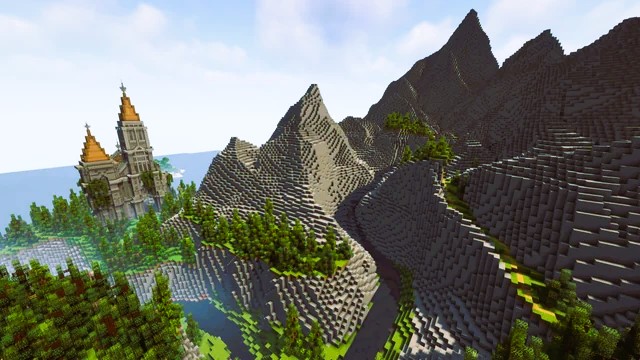Terraforming is the art of shaping and molding the natural landscape to create immersive and captivating environments in Minecraft. From rolling hills and majestic mountains to tranquil lakes and winding rivers, terraforming allows players to unleash their creativity and transform the world around them into a work of art. In this article, we’ll explore the art of terraforming in Minecraft and discuss techniques for mastering this essential skill.
Understanding Terraforming
Terraforming in Minecraft involves manipulating the terrain to alter its shape, texture, and appearance. Whether you’re creating a lush forest, a barren desert, or a snow-capped mountain range, terraforming allows you to sculpt the landscape to suit your vision and create a unique and immersive environment for your builds.
Terraforming is not just about changing the physical characteristics of the terrain; it’s also about creating a sense of atmosphere and ambiance that enhances the overall aesthetic appeal of the landscape. By incorporating elements such as vegetation, water features, and natural landmarks, you can breathe life into your terraformed creations and make them feel like vibrant and dynamic worlds unto themselves.
Tools and Techniques
Mastering the art of terraforming requires a combination of creativity, patience, and skill. Here are some tools and techniques to help you get started:
- Basic Tools: The basic tools for terraforming in Minecraft include shovels, axes, and pickaxes for manipulating the terrain, as well as buckets for moving and placing water and other liquids.
- Layering: One effective technique for terraforming is to work in layers, starting with the base terrain and gradually adding layers of detail such as hills, valleys, and cliffs to create depth and dimension.
- Sculpting: Use the various tools at your disposal to sculpt and shape the terrain to achieve the desired look and feel. Experiment with different block types and textures to create realistic and visually appealing landscapes.
- Natural Features: Incorporate natural features such as trees, rocks, and vegetation into your terraformed landscapes to add realism and depth. Experiment with different combinations of blocks and materials to create unique and interesting natural formations.
- Water Features: Integrate water features such as rivers, lakes, and waterfalls into your terraformed landscapes to add beauty and tranquility. Use water blocks and flowing water mechanics to create realistic and dynamic water features that enhance the overall ambiance of the environment. Read about recreating real buildings in Minecraft in our article.
Challenges and Considerations

Terraforming in Minecraft can be a challenging and time-consuming process, but the results are well worth the effort. Here are some challenges and considerations to keep in mind:
- Scale: Terraforming large areas of terrain can be time-consuming and labor-intensive, so start small and gradually expand your project as you gain experience and confidence.
- Resources: Terraforming often requires a large quantity of resources such as dirt, stone, and water, so be prepared to gather and stockpile materials before embarking on a terraforming project.
- Aesthetics: Pay attention to the aesthetic principles of design such as balance, proportion, and harmony when terraforming. Experiment with different techniques and styles to find the right balance between realism and creativity.
- Biome Compatibility: Consider the biome in which you’re terraforming and choose materials and features that are appropriate for that environment. Different biomes have different climates, vegetation, and terrain characteristics, so tailor your terraforming techniques accordingly.
Inspiration and Resources
For inspiration and guidance on terraforming in Minecraft, there are plenty of resources available online, including tutorials, guides, and community forums. Reputable sources like Fandom offer valuable information and insights into the art of terraforming and can help you take your skills to the next level.
Terraforming is a powerful and versatile tool that allows players to shape and mold the world of Minecraft to suit their creative vision. Whether you’re creating a sprawling fantasy kingdom, a tranquil garden oasis, or a rugge
